
This article features affiliate links, meaning we’ll earn a small commission if you purchase through these links. Please read our Privacy Policy for more details.

Although in the high-pressure of 21st-century life there seems to the busy to be very little time to spare, still it cannot be denied that embroideries are very much before the public, that new kinds are as constantly to be seen as are the old ones revived and not allowed to remain obscure any longer. The fascinating Romanian embroidery has been known for some little – beyond I mean that charming country north of the Danube where it has been done by the peasants from ancient times. These poor people, uncultivated and rough, have worked on, as time progressed, producing pieces of work which as we look at them after the lapse of years are still handsome.
Affiliate links Schacht Cricket Loom 15 inch
It is very pleasant too, to notice that there are people who find old Romanian blouses and make time for work.
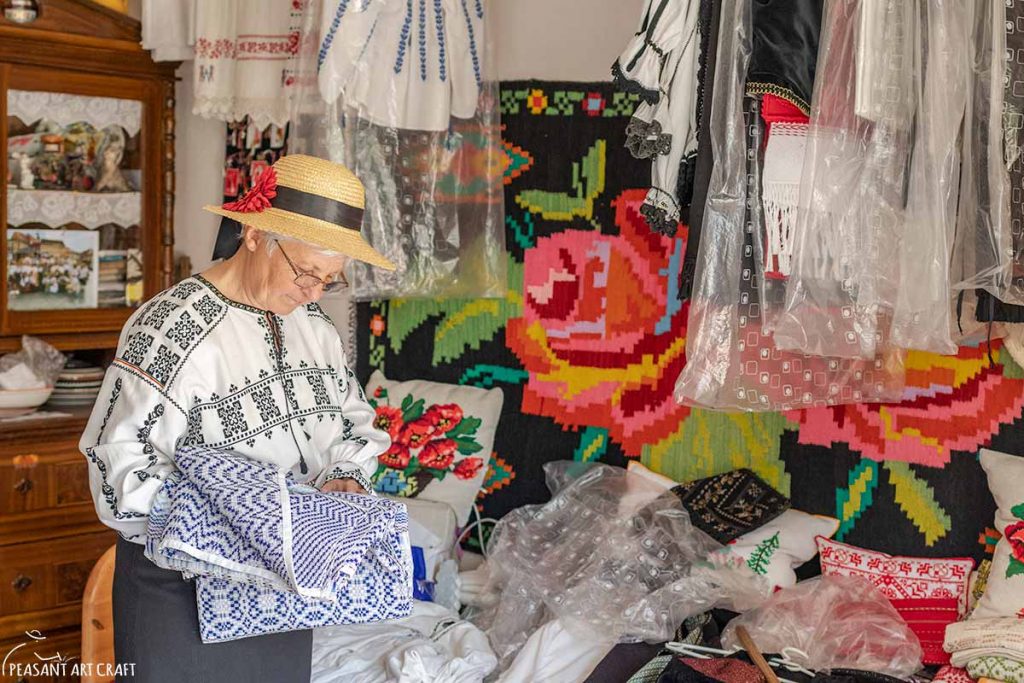
People like 59-year-old Pascu Elena, from Mălâncrav, a tiny village located somewhere about 13 km away from the ancient Romanian city of Sighișoara. Driven by the desire to immerse in their unique local culture and learning first-hand about the region-specific traditional embroidery, we visit Miss Elena’s workshop, where she often sits and embroiders the most cherished Romanian blouses together with children who join in for sewing and weaving events organized by the Mihai Eminescu Trust Foundation, where she volunteers.


She grew up in a single-parent household. Her mother worked hard to support her children and keep them in school. “I was born in Țibănești Commune, Iași County. I was raised by a single mother. Among many duties, she used to spin a lot. She was spinning for money. She was spinning so much that her fingers thickened. I remember my mother working in the other room late at night. It was cold. She placed live coals in a dustpan and laid it at her feet to warm herself. I go up and went to her room.
<-Go to sleep, she said. You have school tomorrow. -No, I want to stay with you.> I would curl up and sleep while she was weaving”, she remembers while she is weaving a cotton fabric.

Her little workshop is adorned with all kinds of old things: lamps, spinning tops, spindles, reeds, straw hats. On the walls, The Flag of Romania and pictures of Romanians in traditional costumes hung over colorful traditional tapestry, as well as her framed diplomas. “After I finished The Weavers School, forty years ago, I came to Sighișoara where I met my husband and got married. It was a hard time. I had children. I would put them to bed and weave by lamplight until two am, then wake up at five am, milk the cows, make hay. It had passed like a dream.”, says Ms. Elena, throwing the shuttle from one side of the loom to another to lay down the weft threads.
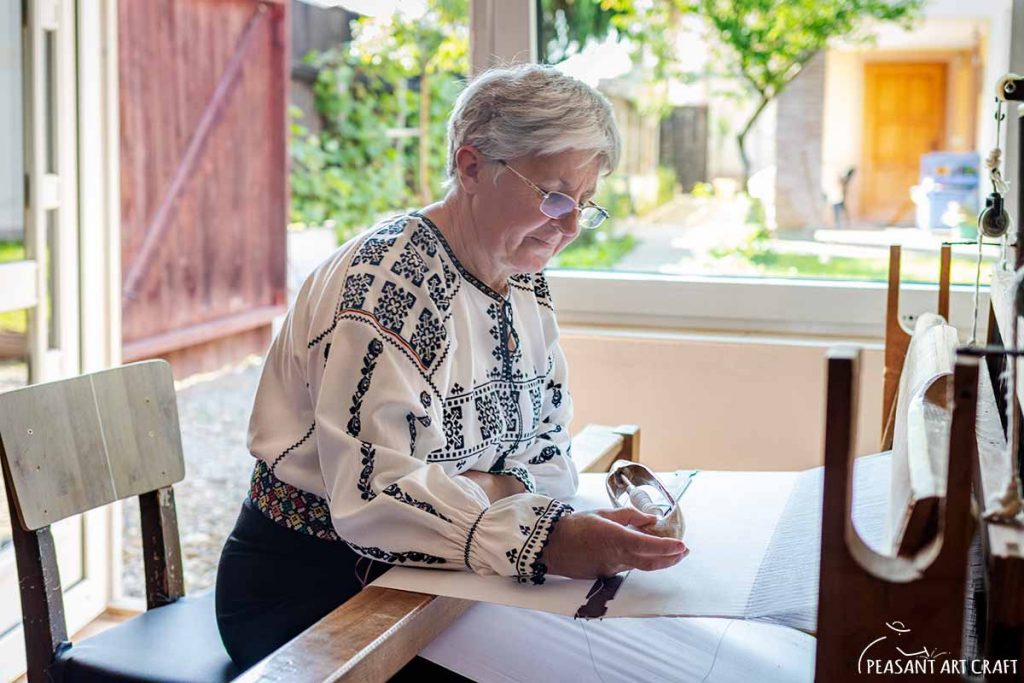
The woven fabric, later used for making traditional blouses, gives all its originality to the work. “With a better quality fabric, you make a blouse for celebration, with poor quality fabric, you make a work blouse”, she explains.
Hang along the wall behind her is a collection of traditional textiles from South Transylvania, both vintage and new blouses, found, or made by her following old embroideries specific to the area. The blouse she is wearing is a reproduction she made after a vintage blouse from Hondol, Hunedoara. The bright colored waist belt is from Muntenia.
“You must respect region-specific sewing techniques. I make blouses specific to our region, Ardeal”, she says while pulling out a traditional blouse from Mărginimea Sibiului.

In south Transylvania, in the ethnographic zone named Mărginimea Sibiului, we find one of the most iconic and widely known folk blouses, ia cu ciocănele, so-called due to the sewn black bands flowing down the sleeve, referred to as “ciocănele”, or “punctul de Săliște”. The folk blouse is decorated with shoulder (umeraș) – a thin strip across the shoulder and rows of embroidered motifs (râuri) flowing on each side of the black bands (ciocănele) all the way down to the ruffled puffy sleeves (fodori). An infinite variety can be had and no two pieces look alike, this resulting from a great range of finely-stitched embroidered symbols that make the râuri, among which the most popular are grapes, clover, grapevine, rose, flies.

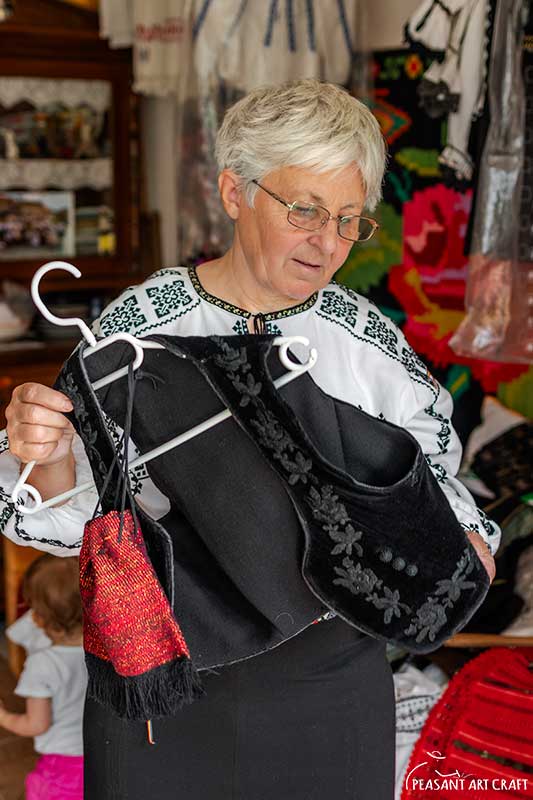
Little more than three colors are used: black, brown, and golden, because the old blouses had decorative motifs sewn over the ciocănele with a golden metallic thread worked over the embroidered strips. A delicate embroidery representing the Tricolour flag is worked on the neckband.
The traditional men’s blouse, whose main occupation was shepherding and transhumance is a distinctive shirt with gussets (cămașă cu barburi). This is a straight shirt with triangular-shaped gussets inserted in the front and back. Due to the gussets, the extension is often pleated.
“It takes about three months to complete a blouse. Hours of work,” she says. Miss Elena much enjoys sharing her scrupulous work with curious travelers looking for interesting places to visit during their stay in Transylvania.

I highly recommend this for people with any interest in understanding this art. It certainly makes you appreciate and understand the caring that goes into a handmade product.
Affiliate links Best Art Craft and Sewing Deals
Similar Articles
Visiting Argeș, Romania – We Were Introduced to Traditional Clothing By Local Weaver From Nucșoara
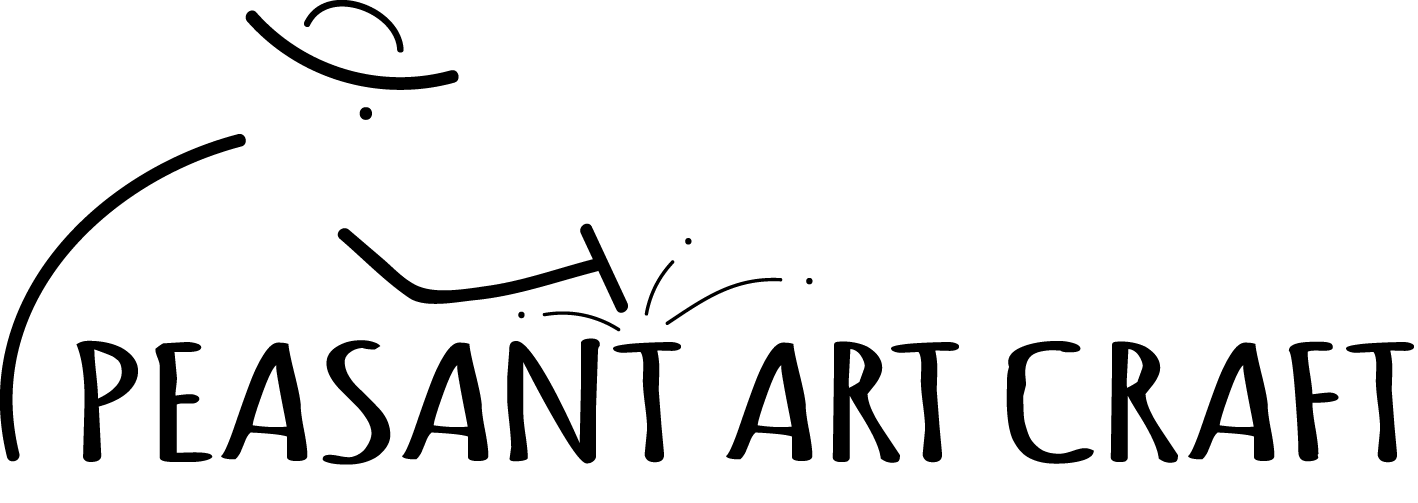
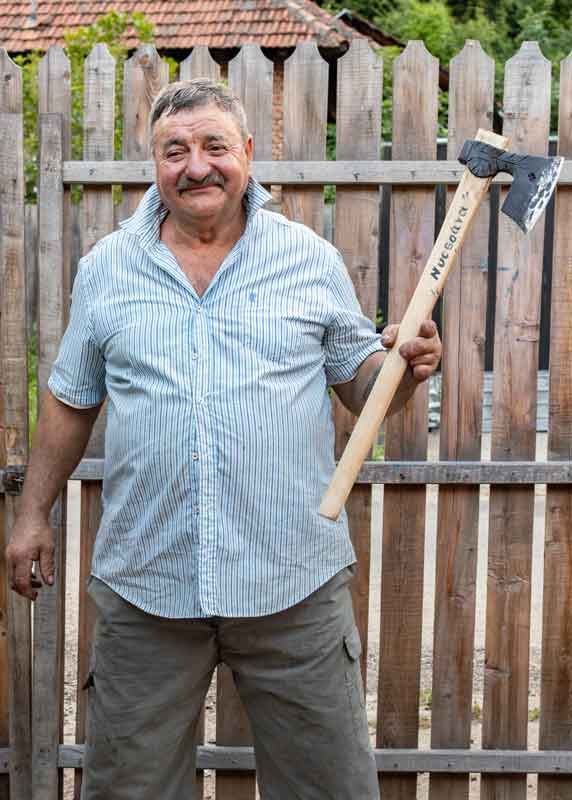
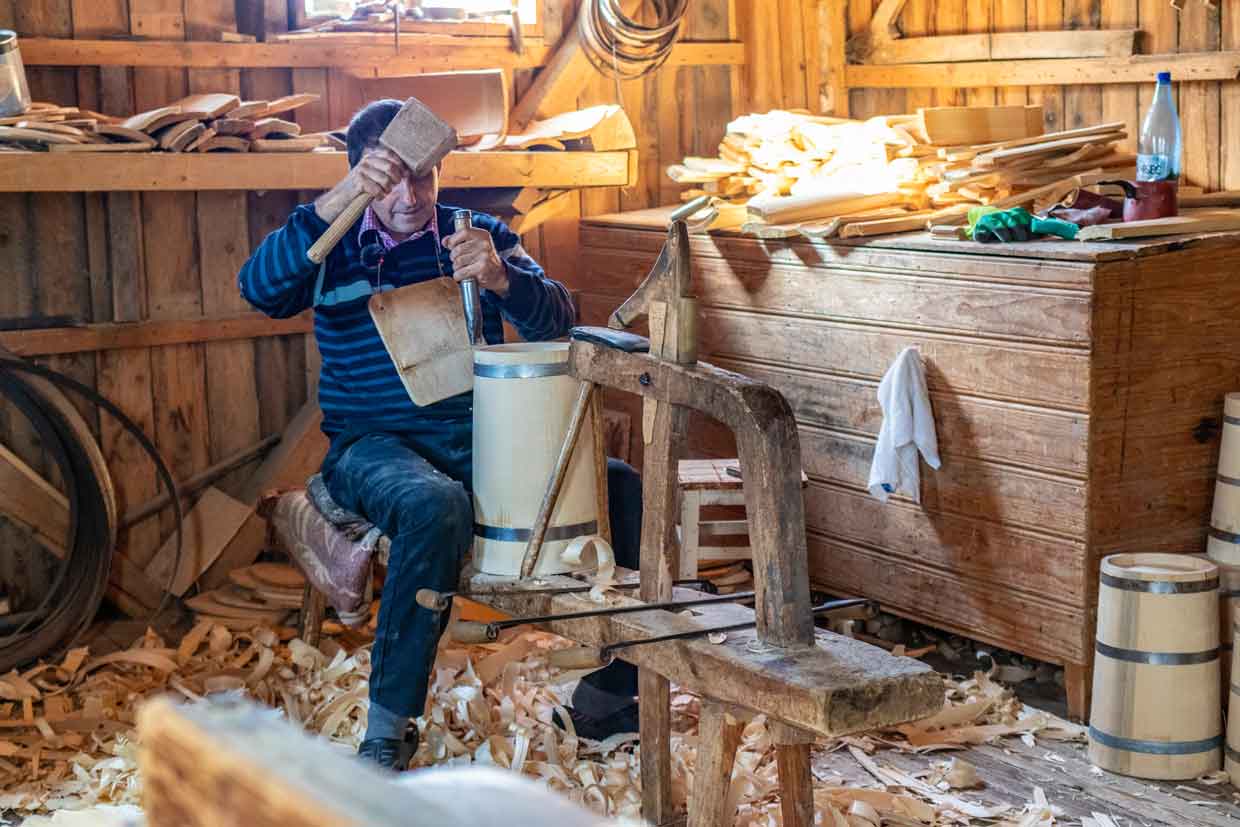
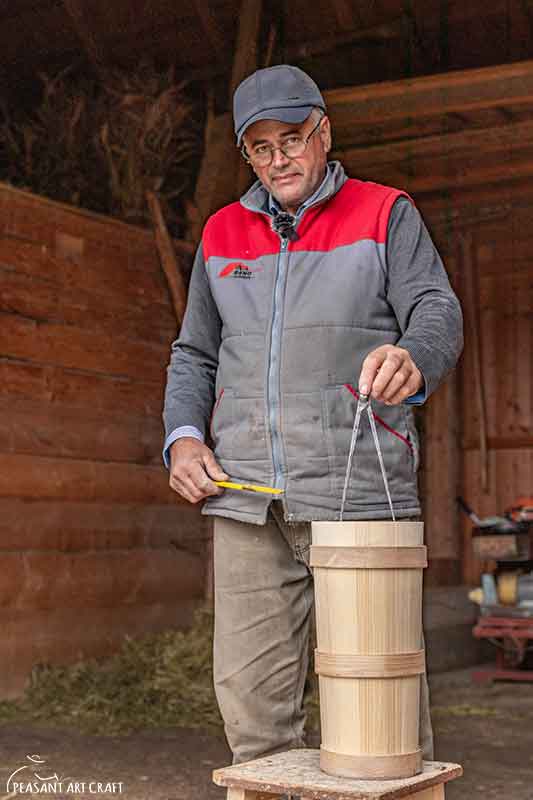

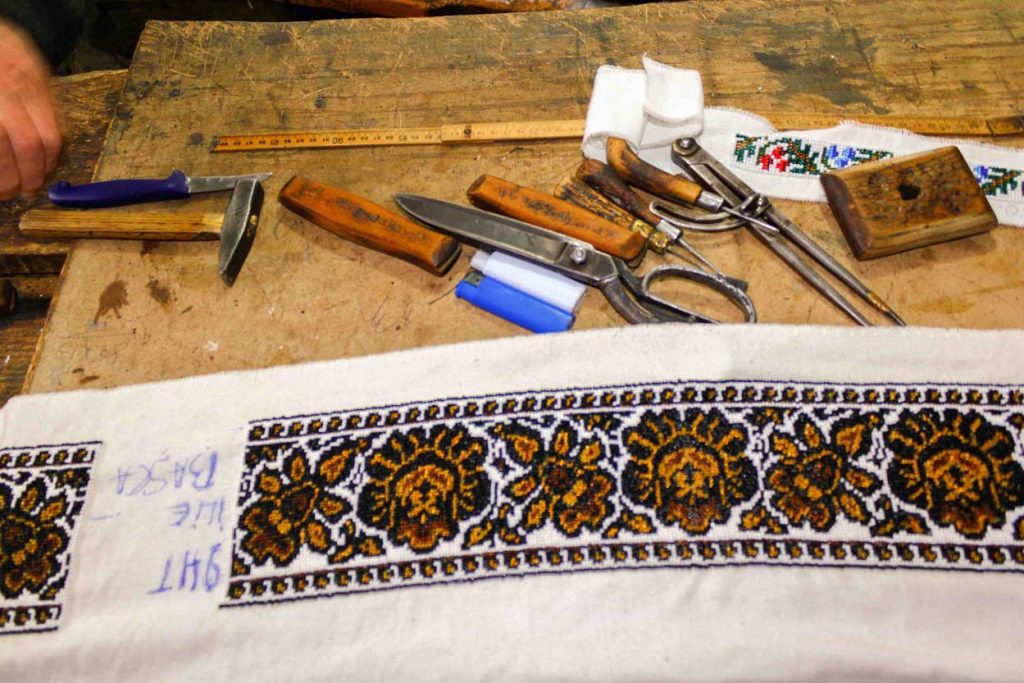

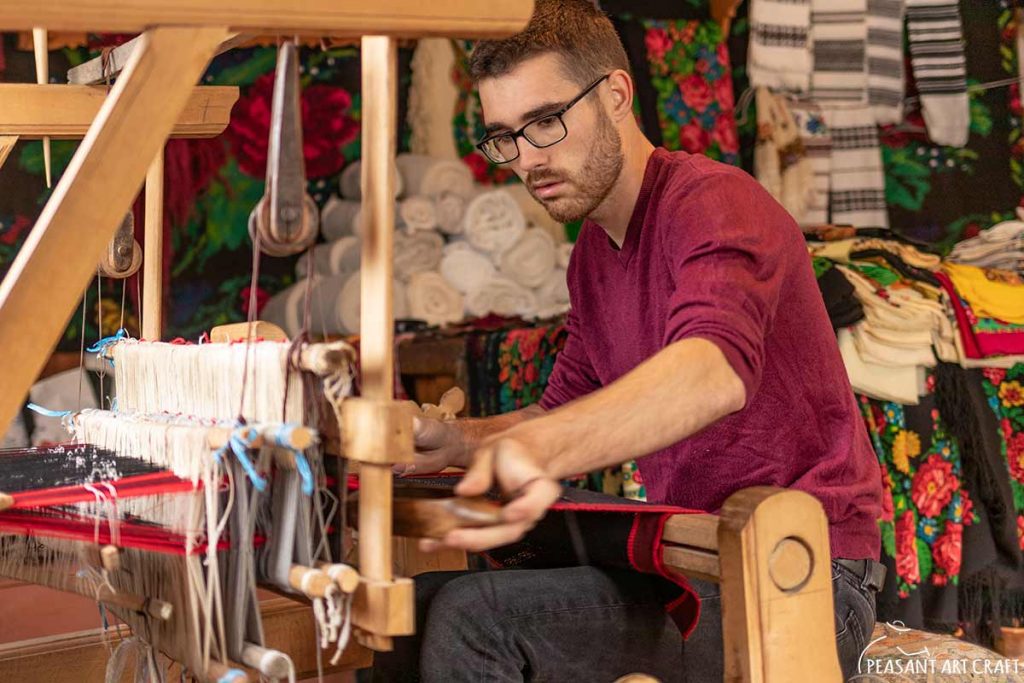





Blog Comments
Barbara Marcus
March 16, 2021 at 5:56 pm
Beautiful, I am part Romanian from cluj and bistritza. Am looking to add blouses to my collection. If you know of good stores please let me know
Judy Mower Pearson
October 6, 2021 at 8:59 pm
So beautiful and interesting!